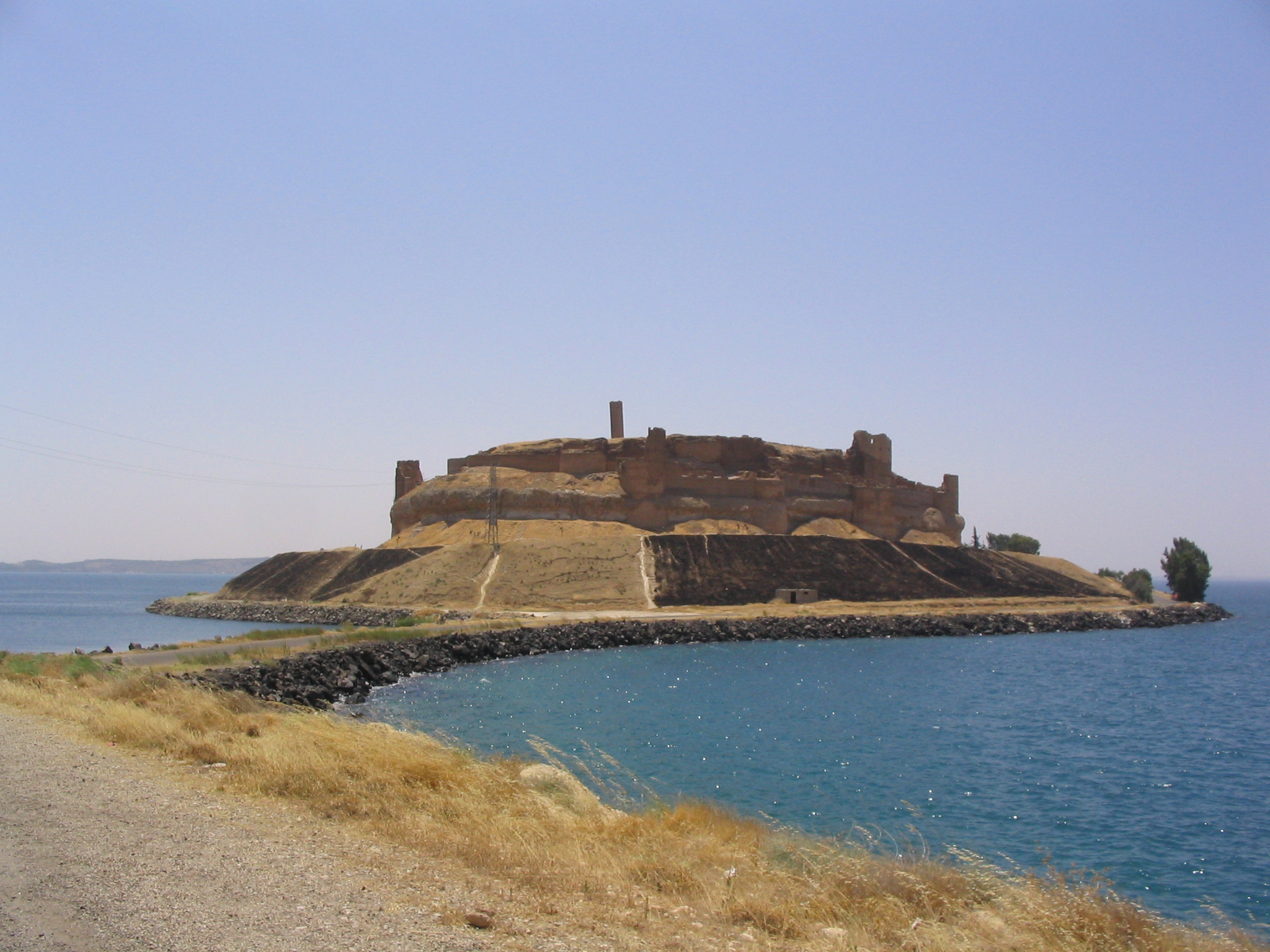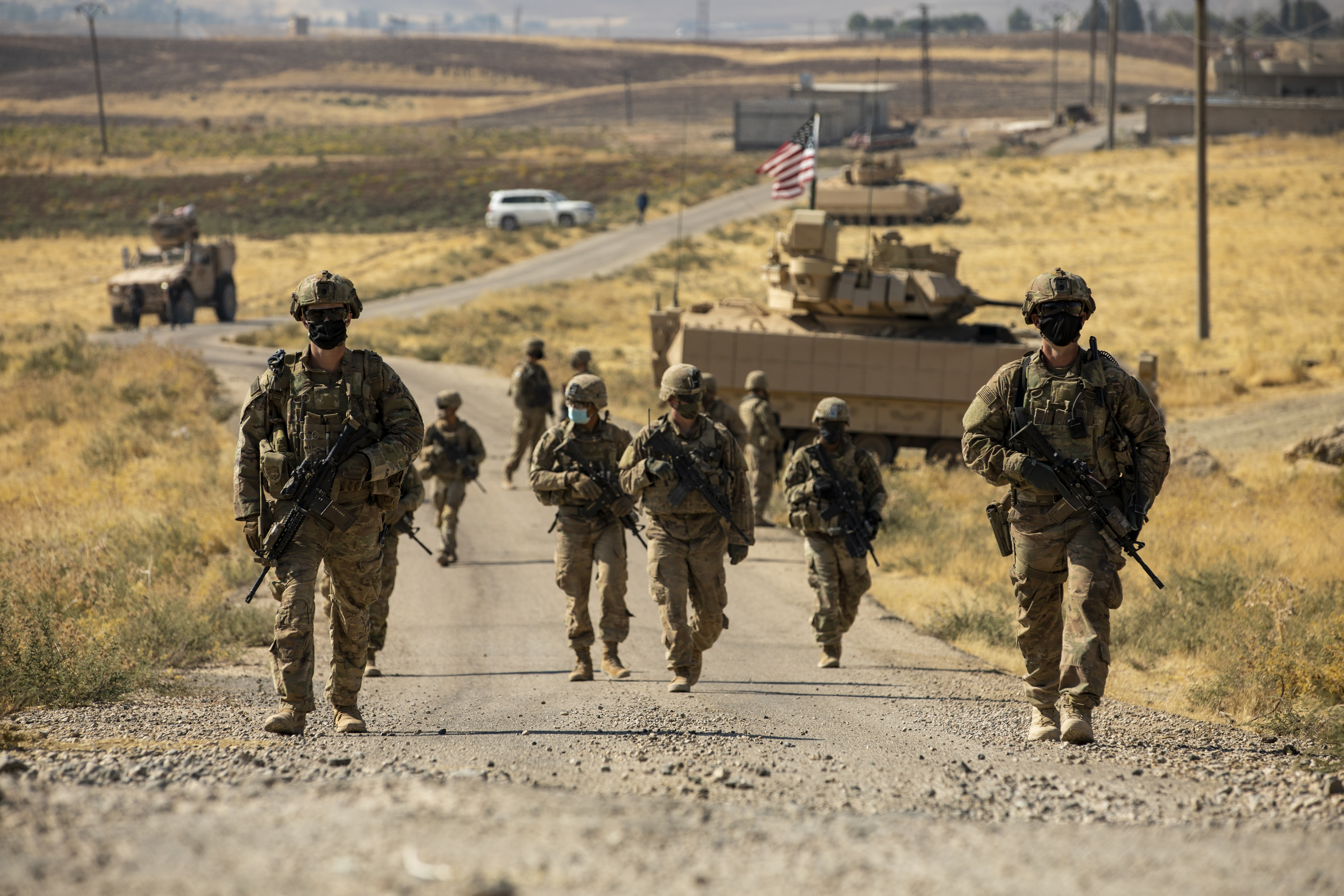|
Ar-Raqqa
Raqqa ( ar, ٱلرَّقَّة, ar-Raqqah, also and ) (Kurdish: Reqa/ ڕەقە) is a city in Syria on the northeast bank of the Euphrates River, about east of Aleppo. It is located east of the Tabqa Dam, Syria's largest dam. The Hellenistic, Roman, and Byzantine city and bishopric Callinicum (formerly a Latin and now a Maronite Catholic titular see) was the capital of the Abbasid Caliphate between 796 and 809, under the reign of Harun al-Rashid. It was also the capital of the Islamic State from 2014 to 2017. With a population of 531,952 based on the 2021 official census, Raqqa is the sixth largest city in Syria. During the Syrian Civil War, the city was captured in 2013 by the Syrian opposition and then by the Islamic State. ISIS made the city its capital in 2014. As a result, the city was hit by airstrikes from the Syrian government, Russia, the United States, and several other countries. Most non-Sunni religious structures in the city were destroyed by ISIS, most notably th ... [...More Info...] [...Related Items...] OR: [Wikipedia] [Google] [Baidu] |
Tabqa Dam
The Tabqa Dam ( ar, سَدُّ الطَّبْقَةِ, Sadd aṭ-Ṭabqah, ku, Bendava Tebqa; syc, ܣܟܪܐ ܕܛܒܩܗ, Sekro d'Tabqa), or al-Thawra Dam as it is also named ( ar, سَدُّ الثَّوْرَةِ, Sadd aṯ-Ṯawrah, ku, Bendava Tewra; syc, ܣܟܪܐ ܕܬܘܪܗ, Sekro d'Ṯawra, literally "Dam of the Revolution"), most commonly known as Euphrates Dam ( ar, سَدُّ الْفُرَاتِ, Sadd al-Furāt; ku, Bendava Firatê; syc, ܣܟܪܐ ܕܦܪܬ, Sekro d'Frot), is an earthen dam on the Euphrates, located upstream from the city of Raqqa in Raqqa Governorate, Syria. The city of Al-Thawrah is located immediately south of the dam. The dam is high and long and is the largest dam in Syria. Its construction led to the creation of Lake Assad, Syria's largest water reservoir. The dam was constructed between 1968 and 1973 with help from the Soviet Union. At the same time, an international effort was made to excavate and document as many archaeological remains as pos ... [...More Info...] [...Related Items...] OR: [Wikipedia] [Google] [Baidu] |
Territory Of The Islamic State
The territory of the Islamic State had its core in Iraq and Syria from 2013 to 2017 and 2019 respectively, where the proto-state controlled significant swathes of urban, rural, and desert territory. Today the group controls scattered pockets of land in the area, as well as territory or insurgent cells in other areas, notably Afghanistan, West Africa, the Sahara, Somalia, Mozambique, and the Democratic Republic of the Congo. In early 2017, IS controlled approximately 45,377 square kilometers (17,520 square miles) of territory in Iraq and Syria and 7,323km2 of territory elsewhere, for a total of . This represents a substantial decline from the group's territorial peak in late 2014, when it controlled between of territory in total. IS territory has declined substantially in almost every country since 2014, a result of the group's unpopularity and the military action taken against it. By late March 2019, IS territory in Syria was reduced to only the besieged Syrian Desert pocke ... [...More Info...] [...Related Items...] OR: [Wikipedia] [Google] [Baidu] |
Raqqa District
Raqqa District ( ar, منطقة مركز الرقة, Manṭiqat ar-Raqqah) is a district of the Raqqa Governorate in northern Syria. The administrative centre is the city of Raqqa. At the 2004 census, the district had a population of 503,960. Sub-districts The district of Raqqa is divided into four subdistricts or nawāḥī (population as of 2004): *Raqqa Subdistrict (ناحية الرقّة): population 338,773. *Al-Sabkhah Subdistrict (ناحية السبخة): population 48,106 *Al-Karamah Subdistrict (ناحية الكرامة): population 74,429. *Maadan Subdistrict Maadan Subdistrict or Maadan Nahiyah ( ar, ناحية معدان) is a Syrian Nahiyah (Subdistrict) located in Raqqa District in Raqqa Raqqa ( ar, ٱلرَّقَّة, ar-Raqqah, also and ) ( Kurdish: Reqa/ ڕەقە) is a city in Syria on the no ... (ناحية معدان): population 42,652. References Districts of Raqqa Governorate {{RaqqaSY-geo-stub ... [...More Info...] [...Related Items...] OR: [Wikipedia] [Google] [Baidu] |
Raqqa Governorate
Raqqa Governorate ( ar, مُحافظة الرقة, Muḥāfaẓat ar-Raqqah) is one of the fourteen governorates of Syria. It is situated in the north of the country and covers an area of 19,618 km2. The capital is Raqqa. The Islamic State of Iraq and Levant claimed full control of this province as of August 24, 2014 when its fighters captured Tabqa Airbase in the southwest part of the province. However, the Syrian Democratic Forces now control much of the province; all of the area north of the Euphrates River including the provincial capital of Raqqa and the city of al-Thawrah are under SDF control, with the government holding the southern part of the governorate after a successful offensive was launched with the aid of Liwa al-Quds, tribal militias and Russian air support, which resulted in the recapture of the city of Resafa, and the capture of many oil fields in Ar-Raqqah province, including various oil and gas stations. History Modern Syria (1946–2011) Al-Rashid Gover ... [...More Info...] [...Related Items...] OR: [Wikipedia] [Google] [Baidu] |
Raqqa Subdistrict
Raqqa Subdistrict or ar-Raqqah Nahiyah ( ar, ناحية الرقّة), a subdistrict of Raqqa District, is the central area of Raqqa Governorate (Syria), including the city of Raqqa and the nearby countryside north of the Euphrates. The subdistrict population at the 2004 census was 338,773, the majority of which living in Raqqa city itself. The administrative centre is Raqqa. Formerly, much of the subdistrict was controlled by ISIS. Raqqa Subdistrict is bounded by the Euphrates to the South, Tal Abyad District to the North, and also of Raqqa District: Al-Jarniyah Subdistrict to the West, and Al-Karamah Subdistrict to the East. Towns and villages The towns and villages in Raqqa Subdistrict and their populations as at the 2004 census were: * Abbara (لعبارة), pop 1305 * Abu Kabret Al Rashid (أبو كبرة-الرشيد), pop 686 * Abu Rajab (أبو رجب), pop 844 * Abu Suseh (أبو سوسة), pop 2561 * Adnaniyeh (لعدنانية), pop 1931 * Andalus (لأندلس), pop ... [...More Info...] [...Related Items...] OR: [Wikipedia] [Google] [Baidu] |
Syrian Opposition
The Syrian opposition ( ar, المعارضة السورية ', ) is the political structure represented by the Syrian National Coalition and associated Syrian anti-Assad groups with certain territorial control as an alternative Syrian government. The Syrian opposition evolved since the beginning of the Syrian conflict from groups calling for the overthrow of the Assad government in Syria and who have opposed its Ba'athist government. Prior to the Syrian Civil War, the term "opposition" ( ar, المعارضة ) had been used to refer to traditional political actors, for example the National Coordination Committee for Democratic Change; that is, groups and individuals who have had a history of dissidence against the Syrian state. The first opposition structures to form in the Syrian uprising were local protest-organizing committees. These formed in April 2011, as protesters graduated from spontaneous protests to protests organized by meetings beforehand. The Syrian upris ... [...More Info...] [...Related Items...] OR: [Wikipedia] [Google] [Baidu] |
Military Intervention Against ISIL
In response to rapid territorial gains made by the so-called Islamic State during the first half of 2014, and its universally condemned executions, reported human rights abuses and the fear of further spillovers of the Syrian Civil War, many states began to intervene against it in both the Syrian Civil War and the War in Iraq. Later, there were also minor interventions by some states against IS-affiliated groups in Nigeria and Libya. In mid-June 2014, Iran, according to American and British information, started flying drones over Iraq, and, according to Reuters, Iranian soldiers were in Iraq fighting IS. Simultaneously, the United States ordered a small number of troops to Iraq and started flying crewed aircraft over Iraq. In July 2014, according to the International Institute for Strategic Studies, Iran sent Sukhoi Su-25 aircraft to Iraq, and Hezbollah purportedly sent trainers and advisers to Iraq in order to help Shia militias to monitor ISIL's movements. In August 2014, th ... [...More Info...] [...Related Items...] OR: [Wikipedia] [Google] [Baidu] |
Sunni
Sunni Islam () is the largest branch of Islam, followed by 85–90% of the world's Muslims. Its name comes from the word '' Sunnah'', referring to the tradition of Muhammad. The differences between Sunni and Shia Muslims arose from a disagreement over the succession to Muhammad and subsequently acquired broader political significance, as well as theological and juridical dimensions. According to Sunni traditions, Muhammad left no successor and the participants of the Saqifah event appointed Abu Bakr as the next-in-line (the first caliph). This contrasts with the Shia view, which holds that Muhammad appointed his son-in-law and cousin Ali ibn Abi Talib as his successor. The adherents of Sunni Islam are referred to in Arabic as ("the people of the Sunnah and the community") or for short. In English, its doctrines and practices are sometimes called ''Sunnism'', while adherents are known as Sunni Muslims, Sunnis, Sunnites and Ahlus Sunnah. Sunni Islam is sometimes referre ... [...More Info...] [...Related Items...] OR: [Wikipedia] [Google] [Baidu] |
Aleppo
)), is an adjective which means "white-colored mixed with black". , motto = , image_map = , mapsize = , map_caption = , image_map1 = , mapsize1 = , map_caption1 = , pushpin_map = Syria#Mediterranean east#Asia#Syria Aleppo , pushpin_label_position = left , pushpin_relief = yes , pushpin_mapsize = , pushpin_map_caption = Location of Aleppo in Syria , coordinates = , subdivision_type = Country , subdivision_name = , subdivision_type1 = Governorate , subdivision_type2 = District , subdivision_type3 = Subdistrict , subdivision_name1 = Aleppo Governorate , subdivision_name2 = Mount Simeon (Jabal Semaan) , subdivision_name3 = Mount Simeon ( ... [...More Info...] [...Related Items...] OR: [Wikipedia] [Google] [Baidu] |
Destruction Of Cultural Heritage By ISIS
Deliberate destruction and theft of cultural heritage has been conducted by the Islamic State since 2014 in Iraq, Syria, and to a lesser extent in Libya. The destruction targets various places of worship under ISIL control and ancient historical artifacts. In Iraq, between the fall of Mosul in June 2014 and February 2015, IS had plundered and destroyed at least 28 historical religious buildings. Valuable items from some buildings were looted in order to smuggle and sell them to foreigners to finance the running of the Islamic State. By March 2019, IS had lost most of its territory in the Middle East. Motivation IS justifies the destruction of cultural heritage sites by its Salafism, which, according to its followers, places "great importance on establishing tawhid (monotheism)", and "eliminating shirk (polytheism)". Thus there is an ideological underpinning to their destruction of historical and cultural heritage sites. IS views its actions in sites like Palmyra and Nimrud as ... [...More Info...] [...Related Items...] OR: [Wikipedia] [Google] [Baidu] |
Harun Al-Rashid
Abu Ja'far Harun ibn Muhammad al-Mahdi ( ar , أبو جعفر هارون ابن محمد المهدي) or Harun ibn al-Mahdi (; or 766 – 24 March 809), famously known as Harun al-Rashid ( ar, هَارُون الرَشِيد, translit=Hārūn al-Rashīd) was the fifth Abbasid caliph of the Abbasid Caliphate, reigning from September 786 until his death. His reign is traditionally regarded to be the beginning of the Islamic Golden Age. His epithet "al-Rashid" translates to "the Orthodox", "the Just", "the Upright", or "the Rightly-Guided". Harun established the legendary library Bayt al-Hikma ("House of Wisdom") in Baghdad in present-day Iraq, and during his rule Baghdad began to flourish as a world center of knowledge, culture and trade. During his rule, the family of Barmakids, which played a deciding role in establishing the Abbasid Caliphate, declined gradually. In 796, he moved his court and government to Raqqa in present-day Syria. A Frankish mission came to offer H ... [...More Info...] [...Related Items...] OR: [Wikipedia] [Google] [Baidu] |





